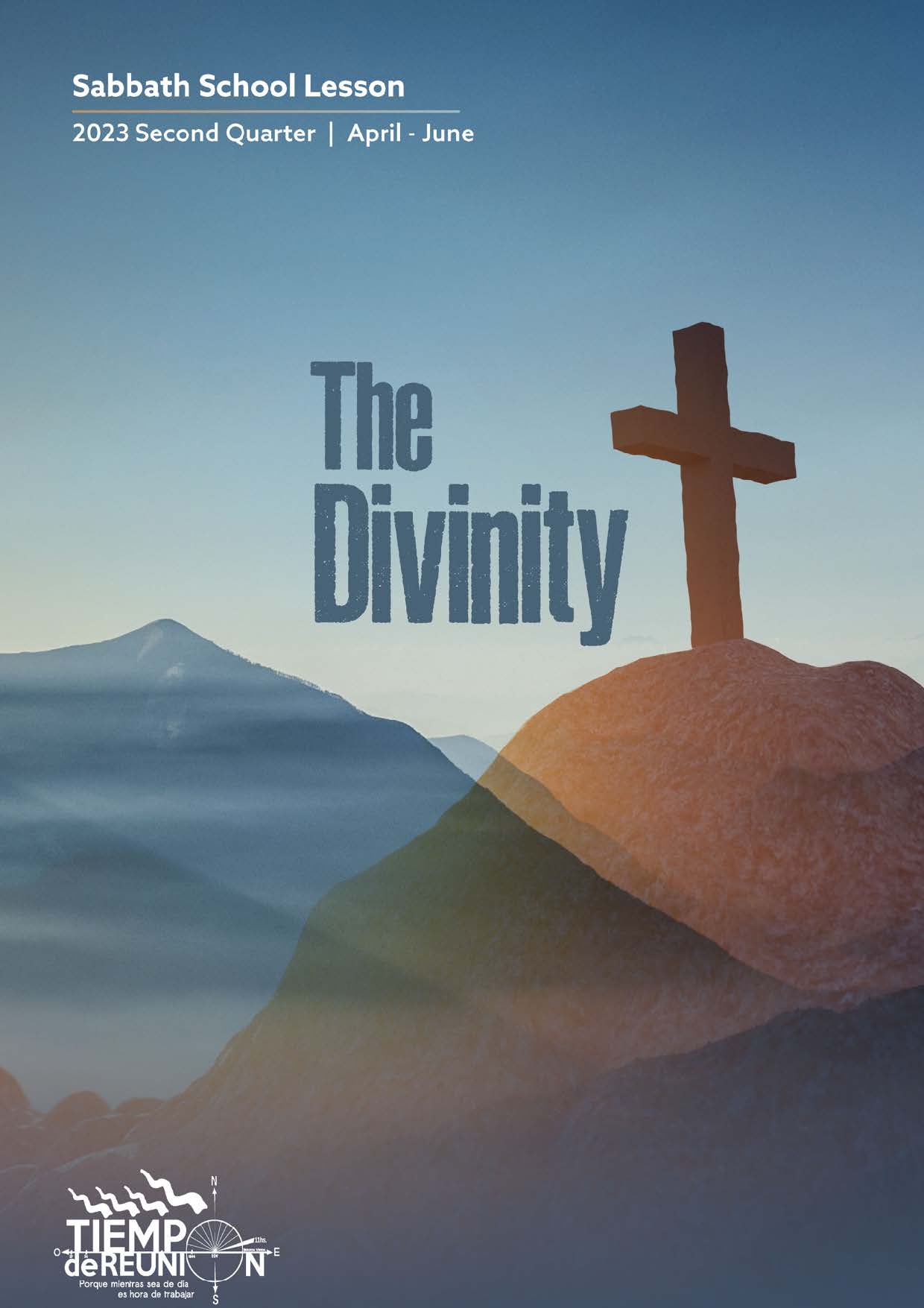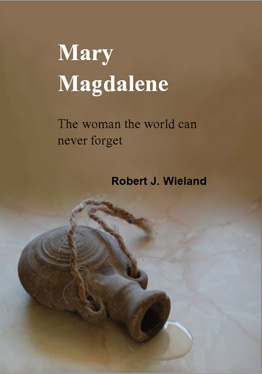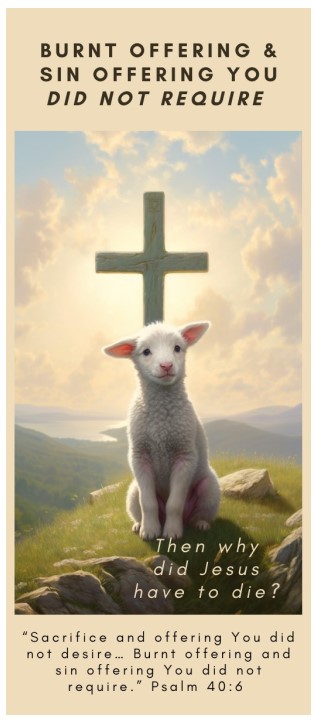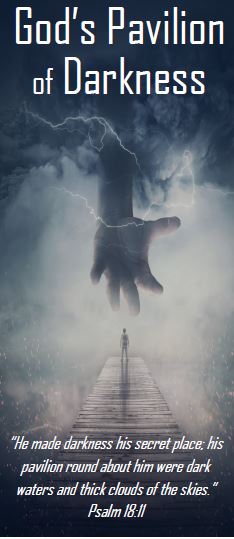Introduction to the Covenants: A Historical backdrop
The subject of the covenants is one of vital importance for Seventh-day Adventists and yet it is a subject that is mostly not well understood or expressed. D.M Canright spoke to this reality when he stated:
No other subject perplexes Adventists so much as the covenants. They dread to meet it. They have tried various ways to explain it away, but they are not satisfactory even to themselves. I have been there. I know. D.M Canright, “The Two Covenants-Chapter XIX,” Seventh-day Adventism Renounced, 1914
Escaping the clutches of Babylon is a far more complex task than most can imagine. Rome understands its systematic theology well when it states:
“The mystery of the Trinity is the central doctrine of Catholic faith. Upon it are based all the other teachings of the Church. (Handbook for Today’s Catholic, 1977. pg. 12.)
All the teachings of Rome find their inspiration in the Trinity. The Athanasian formula of co-equal and co-eternal within one God being, establishes a pattern of thinking with very long tentacles. When Seventh-day Adventists stepped away from Sunday and towards the Sabbath they were crossing many layers of Christian thinking especially when dealing with the subject of the law and the covenants.
Almost the entire Christian world was Trinitarian at the time of the rise of the Advent movement. Is it possible for a man to rightly divide the Word of God when he is serving a false god? Would we expect someone like Augustine to clearly express the covenants with a wrong view of God? Listen to what Augustine says about the Covenants:
In that testament [covenant], however, which is properly called the Old, and was given on Mount Sinai, only earthly happiness is expressly promised. Accordingly that land, into which the nation, after being led through the wilderness, was conducted, is called the land of promise, wherein peace and royal power, and the gaining of victories over enemies, and an abundance of children and of fruits of the ground, and gifts of a similar kind are the promises of the Old Testament [covenant]. And these, indeed, are figures of the spiritual blessings which appertain to the New Testament [covenant]; Philip Schaff, “Augustine, Anti Pelagian Writings,” Nicene and Post Nicene Father Series 1, Vol 5
So according to Augustine the promises made in the Old Testament only related to earthly happiness and were figures of the spiritual blessings that would be obtained in the New Testament. This mode of thinking that places one simply as a shadow of reality stems directly from the influence of Plato and especially his allegory of the cave. See https://en.wikipedia.org/wiki/Allegory_of_the_Cave
John Calvin moved forward to see a covenant of grace extend all the way from the fall of man, yet his expression concerning the difference of how this was ministered in the two testaments continue to reflect a contrast or polarized view.
It is striking that Calvin’s first point, and that which he spends the whole of chapter 10 proving, is the "similarity—or rather unity" of the covenant of God, that it is one in all ages: "The covenant made with all the patriarchs is so much like ours in substance and reality that the two are actually one and the same. Yet they differ in the mode of dispensation [or administration]" (Institutes 2.10.2, p. 429).3 Saints in the Old and the New Testaments share "the same law," "the same doctrine," "the same inheritance," and the "common salvation" by the grace of the "same Mediator" (Institutes 2.10.1, pp. 428, 429). Calvin avers, "It is very important to make this point," adding later that the unity of the covenant is also "very profitable for us" (Institutes 2.10.1, pp. 428, 429).…With this reiterated and understood, Calvin turns to the five differences. First, the Old Testament differs from the New in that it contains physical, earthly and temporal benefits which foreshadowed and mirrored spiritual, heavenly and eternal blessings (2.11.1-3, pp. 449-453). Second, the Old Testament "in the absence of the reality … showed but an image and shadow in place of the substance [whereas] the New Testament reveals the very substance of truth as present" (2.11.4, p. 453).
The third difference is that while the Old Testament law is literal (considered as in its own nature and engraved on stone), the New is spiritual, written in our hearts by the Holy Spirit (2.11.7-8, pp. 456-457). The fourth difference, as Calvin notes, "arises out of the third" (2.11.9, p. 458). The Old Testament, considered from the distinctive idea of "law," is one of "bondage," whereas the New Testament is one of "freedom" through the gospel (2.11.9-10, pp. 458-460). http://www.cprf.co.uk/ articles/calvinscovenanttheology1.htm
Even though Calvin spoke of a covenant of grace that extended to all ages, Plato’s allegory of the cave fed into the writings of Augustine still influenced his shadow versus reality approach. His attempts to escape the wine of Babylon faltered on the covenant question. Calvin was not the first and is by no means the last to be seduced by this paradigm of thinking.
The theology of John Calvin formed the basis of the 1646 Westminster confession that was embraced by the majority of the reformed churches across the world. Although the 1689 London Baptist confession opened a door to a better understanding:
This covenant is revealed in the gospel; first of all to Adam in the promise of salvation by the seed of the woman, and afterwards by farther steps, until the full discovery thereof was completed in the New Testament; and it is founded in that eternal covenant transaction that was between the Father and the Son about the redemption of the elect; and it is alone by the grace of this covenant that all the posterity of fallen Adam that ever were saved did obtain life and blessed immortality, man being now utterly incapable of acceptance with God upon those terms on which Adam stood in his state of innocency. http://www.oldschoolbaptist.org/Articles/Comparison1646W.and1689B..htm#LBCF_-_Chapter_7:_Of_Gods_Covenant
Again the Baptist foundation could not escape the dispensational and sequential view of the covenants. The issues of shadows and reality in conflict caused the idea of the sequence from shadow to reality on the covenant issue.
The two classes of covenants, resolved into two covenants; their nature, and contrast; old covenant fulfilled, and superseded by the new; preparation of the Gentile world for Messiah’s coming; nature and excellence of the gospel. http://founders.org/library/covenants/ch8/
It is true that shadow meets reality in the sacrificial services and the Aaronic priesthood, (Dan 9:27; Heb 7:12) but even then it is incorrectly viewed as shadow versus reality and then incorrectly connected to the covenants and the law issue.
It is my contention that the co-equal and co-source pattern of thinking naturally developing from the Trinity influences the covenant question significantly. The two covenants are seen as two co-source entities that are forced to become sequential (before the cross and after the cross) if the identity of each covenant is to remain distinct from the other. As a worshipper of the Father and Son and seeing all doctrine in the light of their source and channel relationship. I challenge the notion of the covenants as sequential, mutually exclusive and forced to operate in separate dispensations.
This brings us to the heart of the Adventist conflict on the covenants. Since Adventists were drawn from the mostly protestant denominations of the USA, these converts naturally brought with them their Calvinist and Baptist concepts of the covenants. That is why embracing the Seventh day Sabbath against the backdrop of Protestant dispensational covenant theology would produce a very innovative dance of explanation; especially in the realms of Colossians 2 and Galatians 3.
This is why E.J Waggoner dropped a bomb onto the proverbial dance floor with his Gospel in Galatians reply to G.I Butler concerning the law and the covenants in 1888.
The text [Gal 3:24] does not say that the law was a school-master to point men to Christ, but to bring them to Him.
6. Again; the text says it brings men to Christ, that they may be justified by faith. Are people justified by faith in a national capacity. I have just shown that, according to the theory that the apostle is arguing of dispensations, only one generation was brought to Christ, namely, the generation that had the good fortune to live at His first advent; but even that generation was not justified by faith. Very few of them had any faith whatever. They didn't have any faith from first to last. Then they must have remained under the school-master,--the law,--and indeed they did. Justification by faith is an individual, and not a national, matter. Seventh-day Adventists often speak of the great light which "we as a people" possess. But "we as a people" will derive no benefit from that light unless we as individuals possess it in our own hearts. I repeat, justification by faith is something [45] that each individual must experience for himself. Thousands who lived at Christ's first advent knew nothing of this experience, while thousands who lived long before He came, were actually brought to Christ for pardon, and they received it. Abel was counted righteous through faith; Noah was heir of the righteousness which is by faith; and Abraham actually saw Christ's day, and rejoiced in it, although he died 2,000 years before the first advent. And this most positively proves that the apostle, in the third chapter of Galatians, is speaking of individual experience, and not of dispensational changes. There can be no Christian experience, no faith, no justification, no righteousness, that is not an individual matter. People are saved as individuals, and not as nations. {1888 E.J. Waggoner, GBG 44.2}
The reaction to Waggoner’s assertions were attacked, vilified and misrepresented with such an un-Christ-like spirit that it caused Ellen White to question whether there was more to learn on the law and covenant question than was expressed by the founding pioneers.
When they came into the meeting in the morning I was surprised to hear Elder _____ make the kind of speech he did before a large audience of believers and unbelievers--a speech which I knew could not be dictated by the Spirit of the Lord. He was followed by Elder _____, who made remarks of the same order, before Brother _____ began his talk, which was all calculated to create sympathy which I knew was not after God's order. It was human but not divine. And for the first time I began to think it might be we did not hold correct views after all upon the law in Galatians, for the truth required no such spirit to sustain it. 12MR 197 (Ms 24 1888)
While it is true that Waggoner did not have all the light on these questions:
He [The angel in vision] stretched out his arms toward Dr. Waggoner, and to you, Elder Butler, and said in substance as follows: "Neither have all the light upon the law; neither position is perfect." 12 MR 371
It was clear that by 1890, Waggoner had the clearest light on the covenant question and the false yoke of over 1000 years of Christian thought was broken. Ellen White was shown by the Lord:
Night before last I was shown that evidences in regard to the covenants were clear and convincing. Yourself, Brother B, Brother C, and others are spending your investigative powers for naught to produce a position on the covenants to vary from the position that Brother [E. J.] Waggoner has presented 9MR 328
Since I made the statement last Sabbath that the view of the covenants as it had been taught by Brother Waggoner was truth, it seems that great relief has come to many minds.--Letter 30, 1890, p. 2. (To W. C. White and wife, March 10, 1890.) {9MR 329.3}
The central feature of Waggoner’s presentation on the covenants was that they referred to individual experience rather than dispensations. Ellen White was shown that Waggoner was correct in presenting this understanding. It is important to make clear that while worship practices between Old and New Testament were clearly dispensational, the covenant question was not. This is where many become confused. We shall explore this in greater detail but we now have provided a historical backdrop to the issues related to the question of the covenants. In the next article “The Relationship Between the Old and the New Covenant” I will show how a Father and Son pattern of thinking unlocks much of the conflict that arises when you have a co-source or Trinitarian pattern of thinking. It is essential to understand that while there are those who reject the Trinity, like many of the pioneers their pattern of thinking on the covenants and many other subjects is still influenced by this incorrect pattern of two sources leading to source-one versus source-two rather than source-one leading to source-two.
It is timely to consider the question which Jesus posed to the lawyer
Luke 10:26 He said unto him, What is written in the law? how readest thou?
The question is how do you read. What are the patterns or structures you are operating by? Is it a pattern built on the Father and His Son or is it an pattern based on the co-source Trinity?
For an excellent paper relating to the covenant question in Adventist history please read Calvary at Sinai by Paul Penno.





